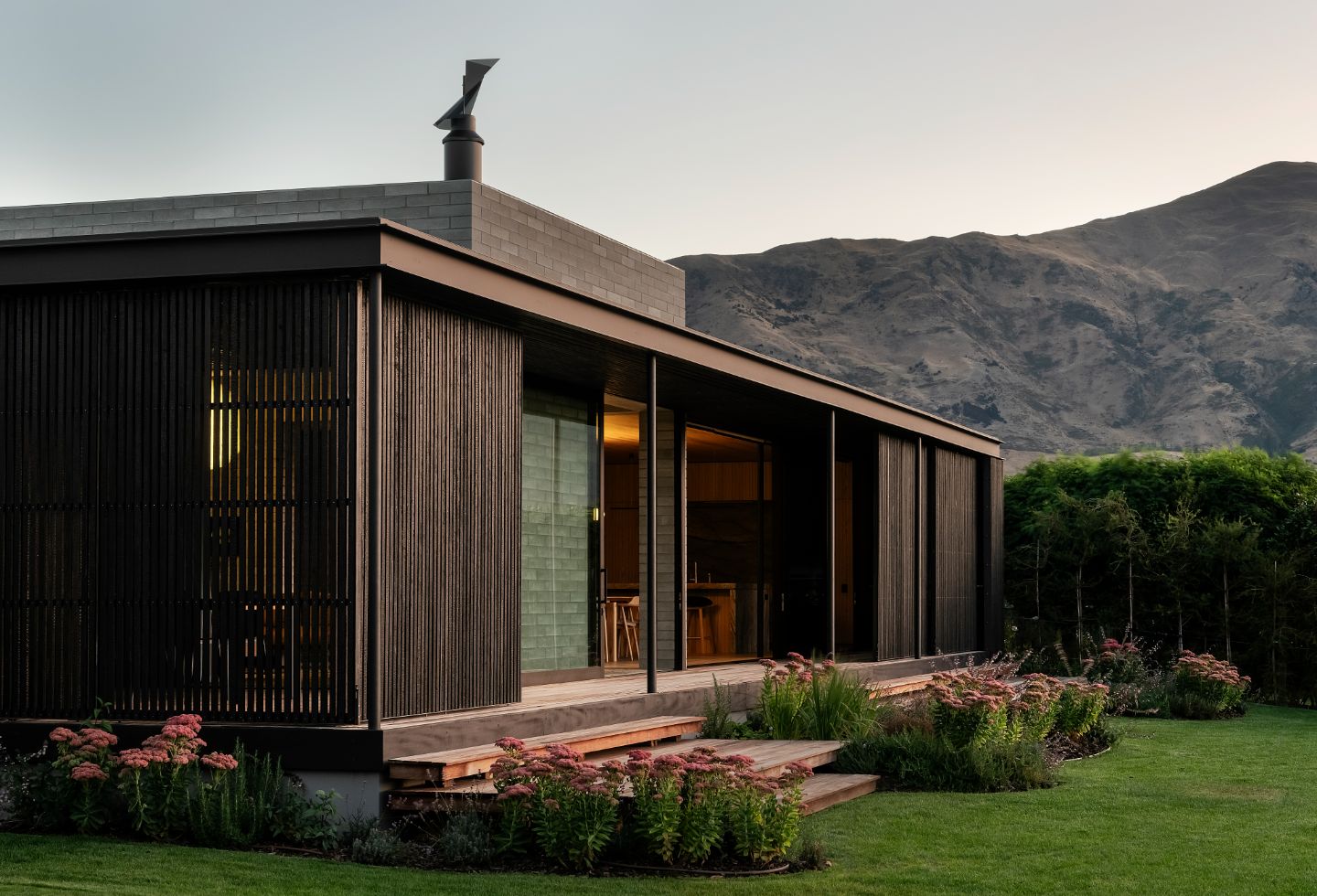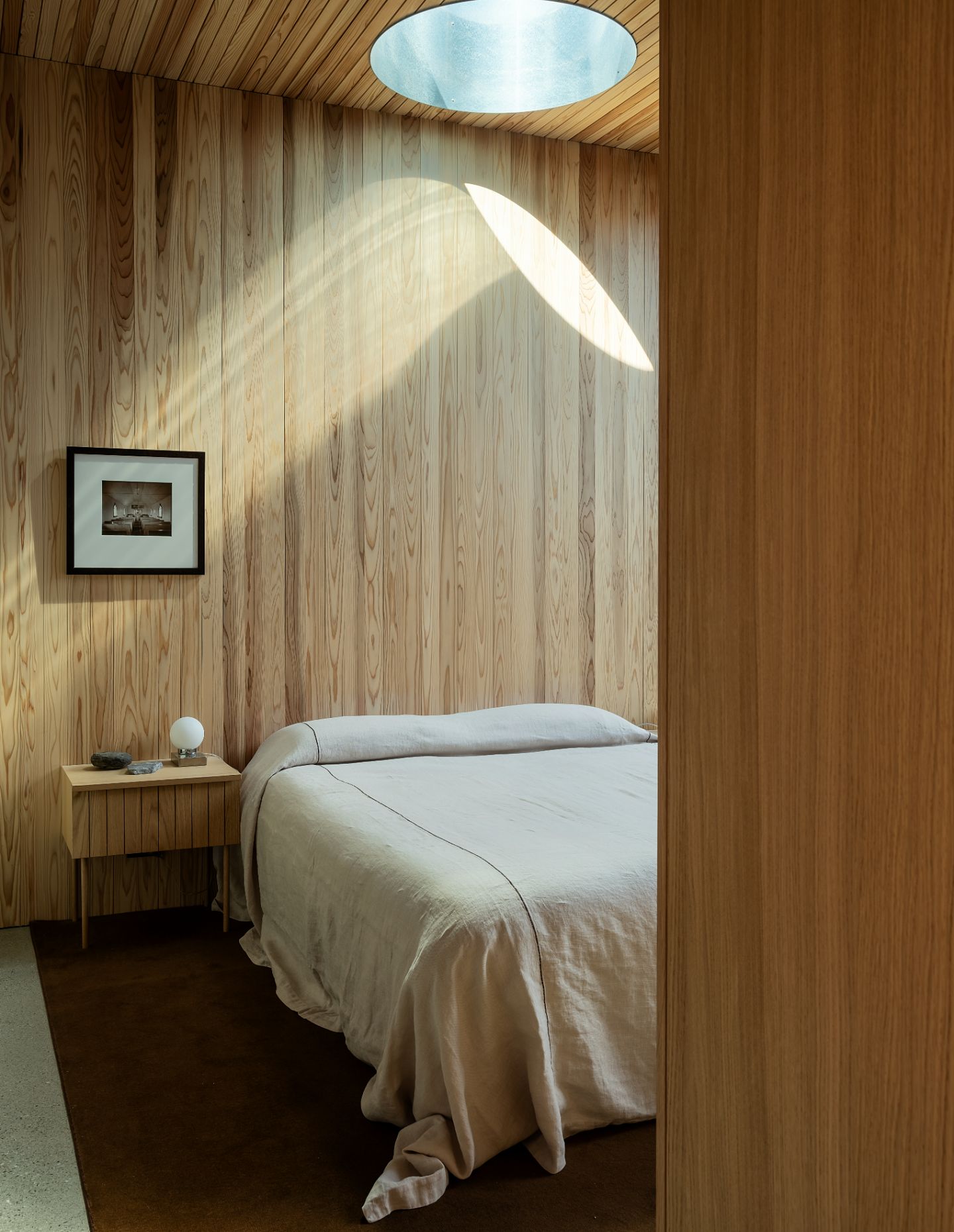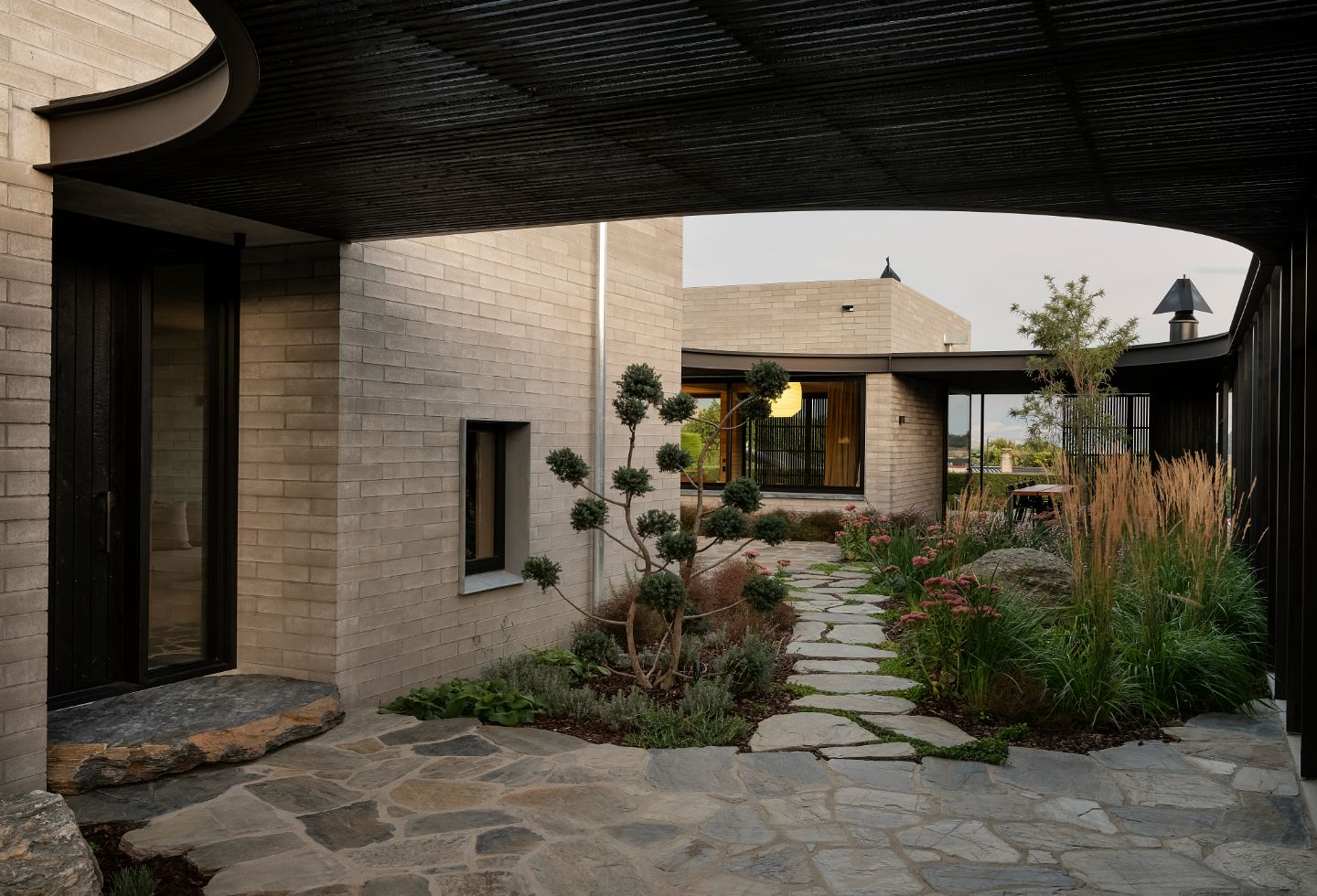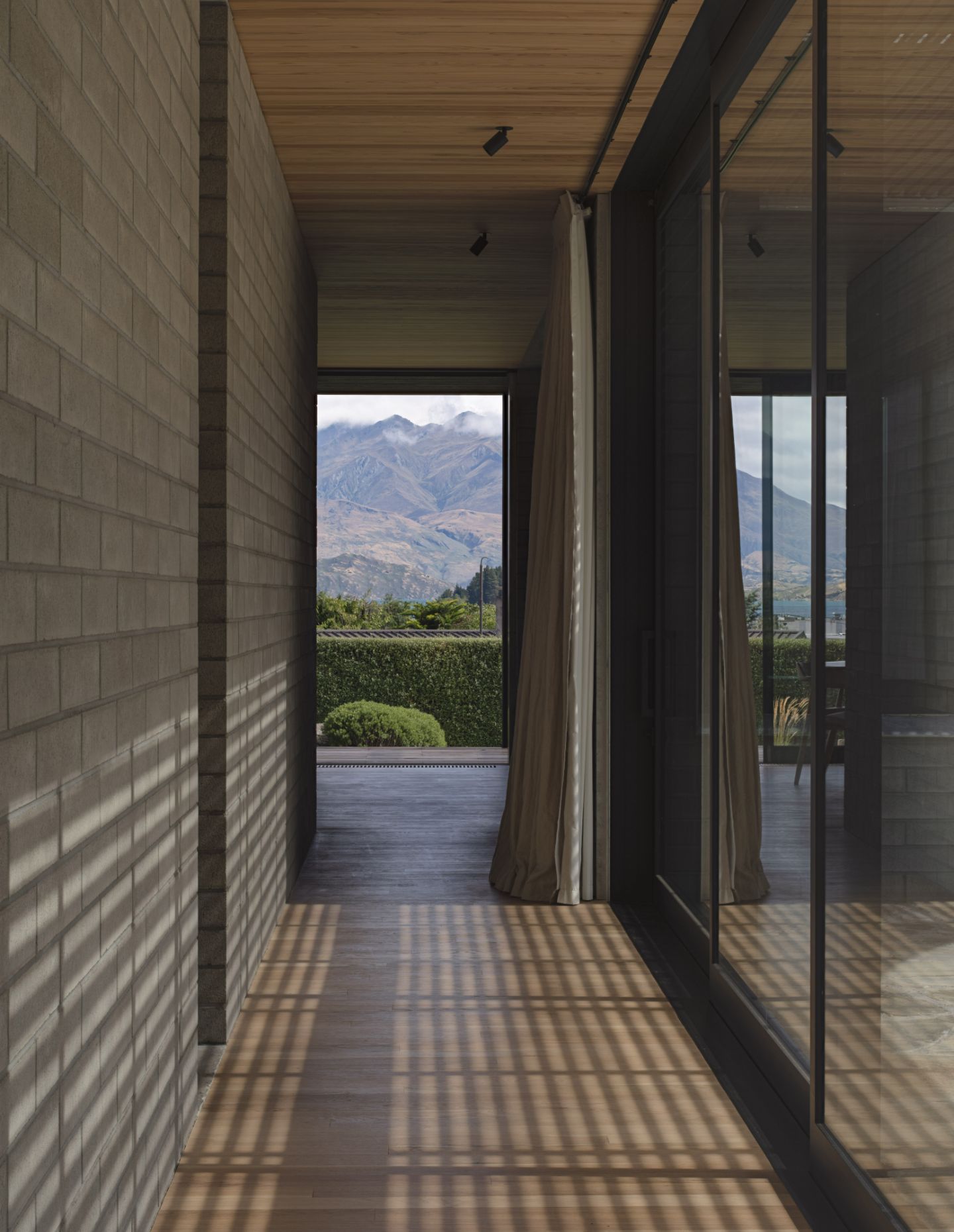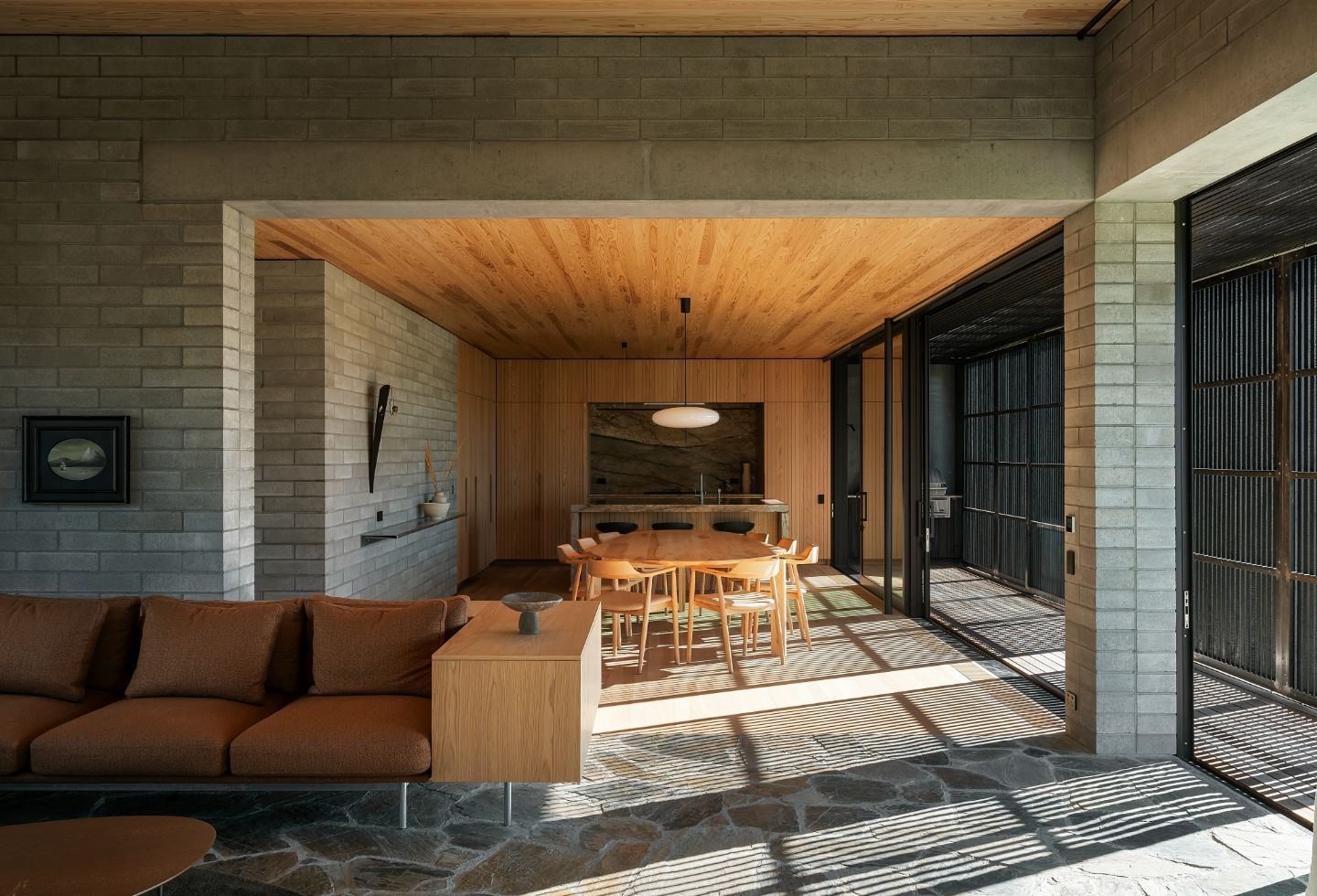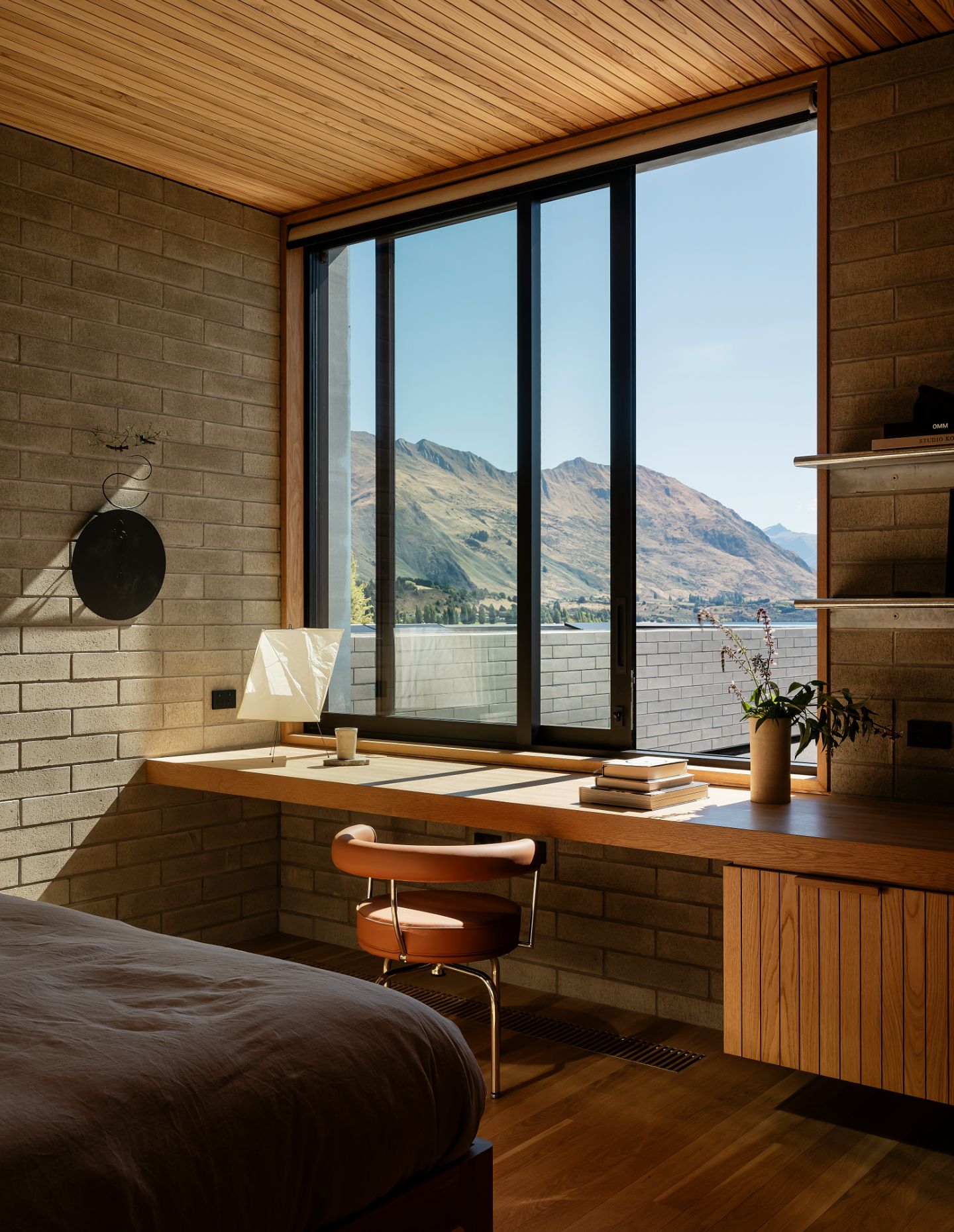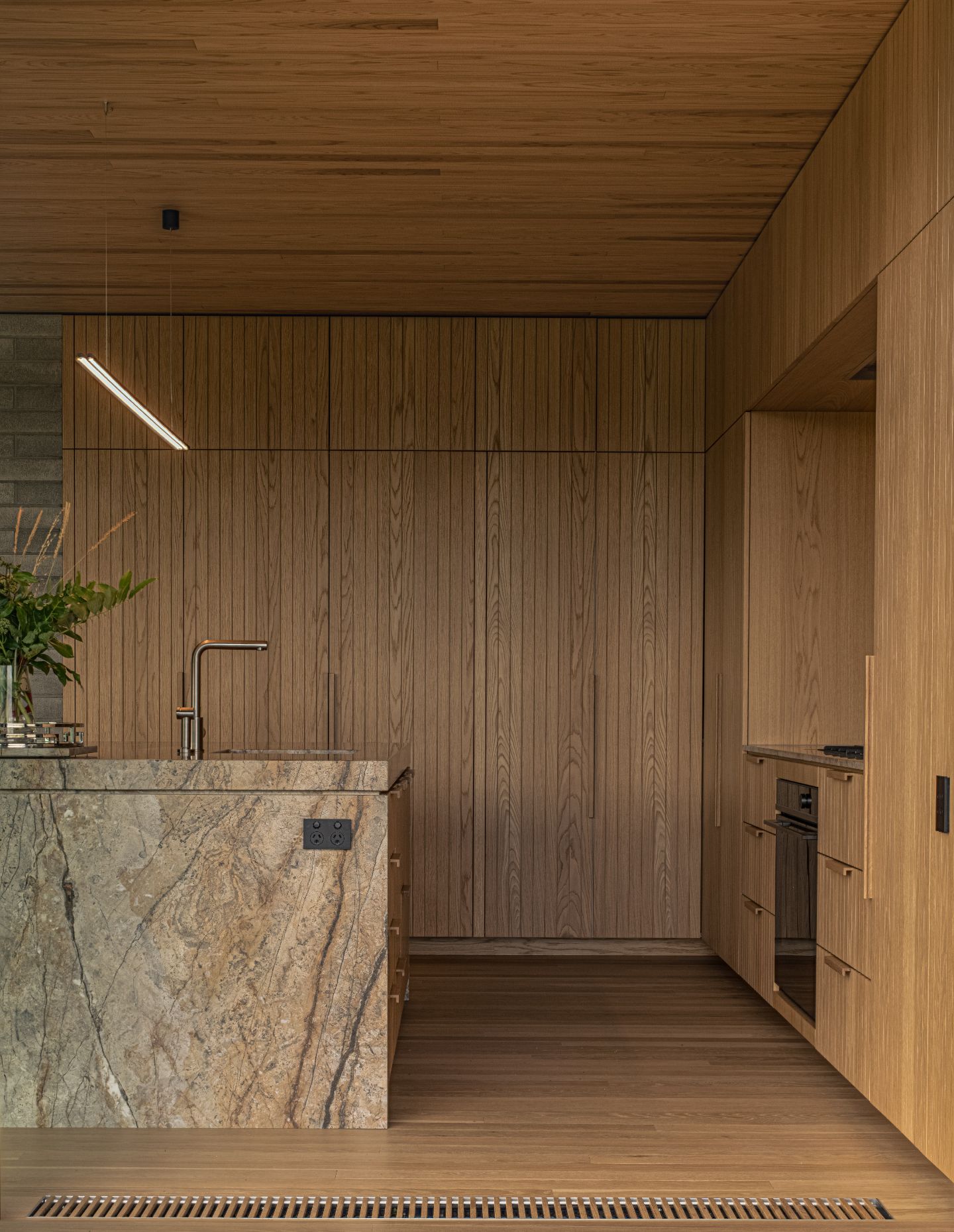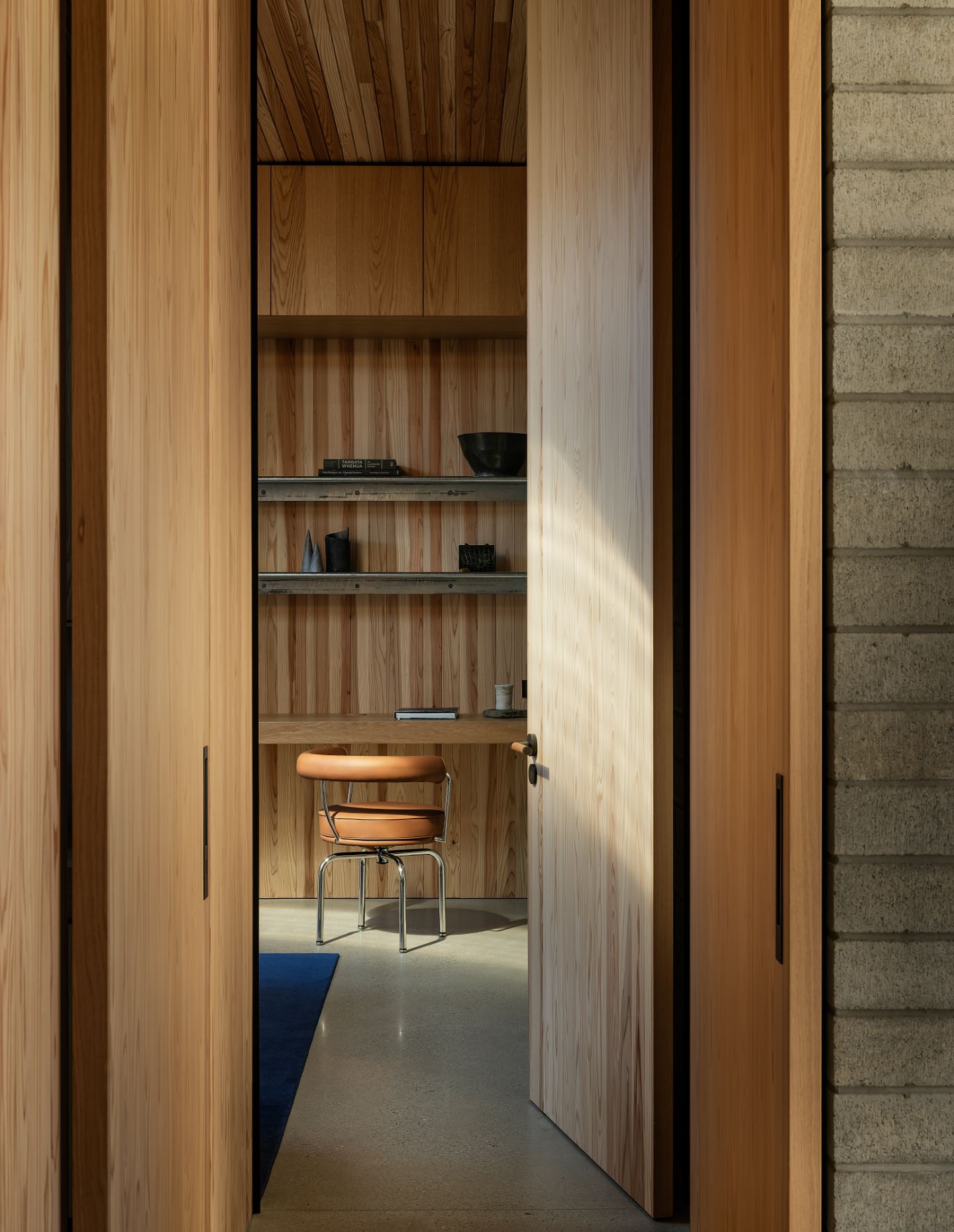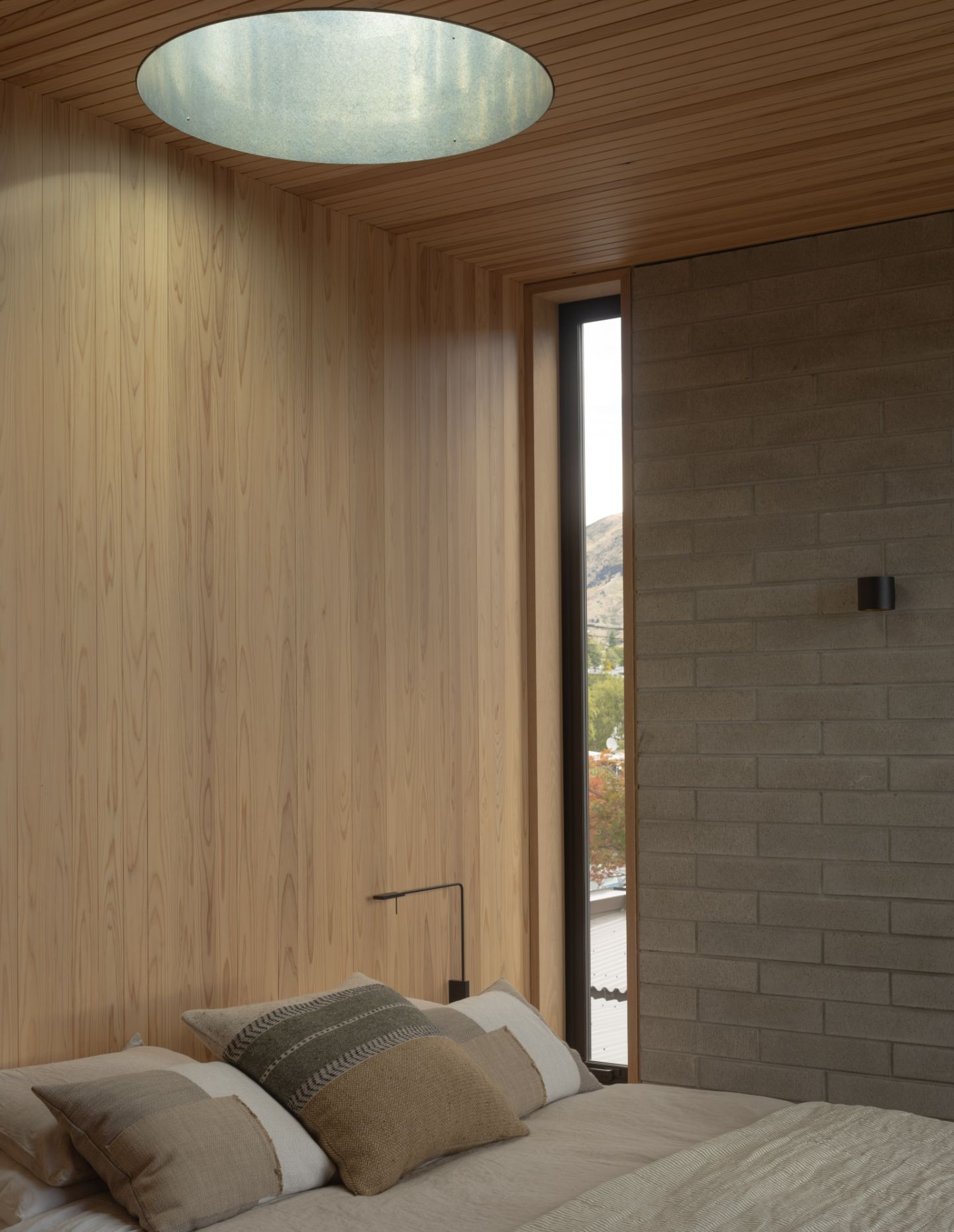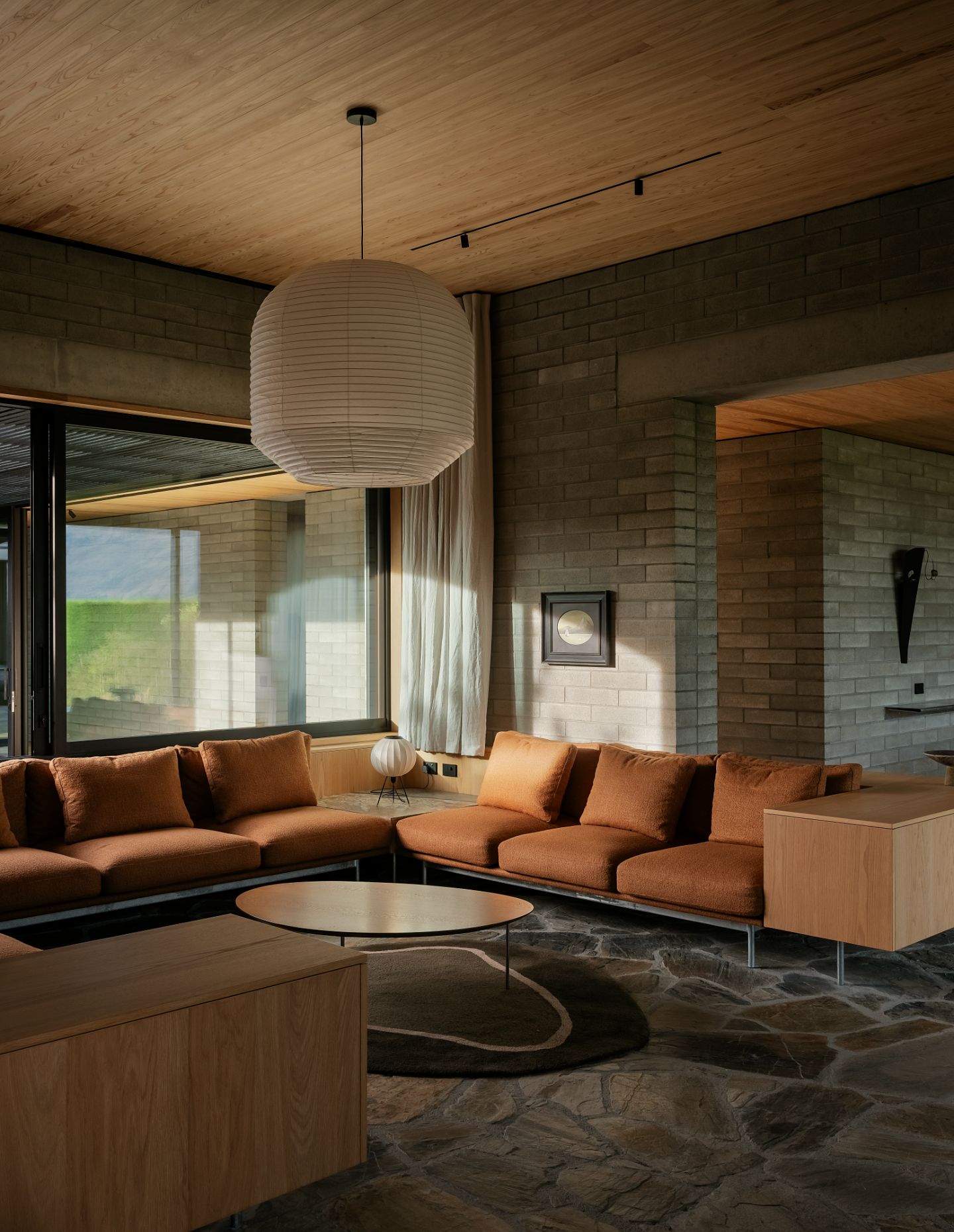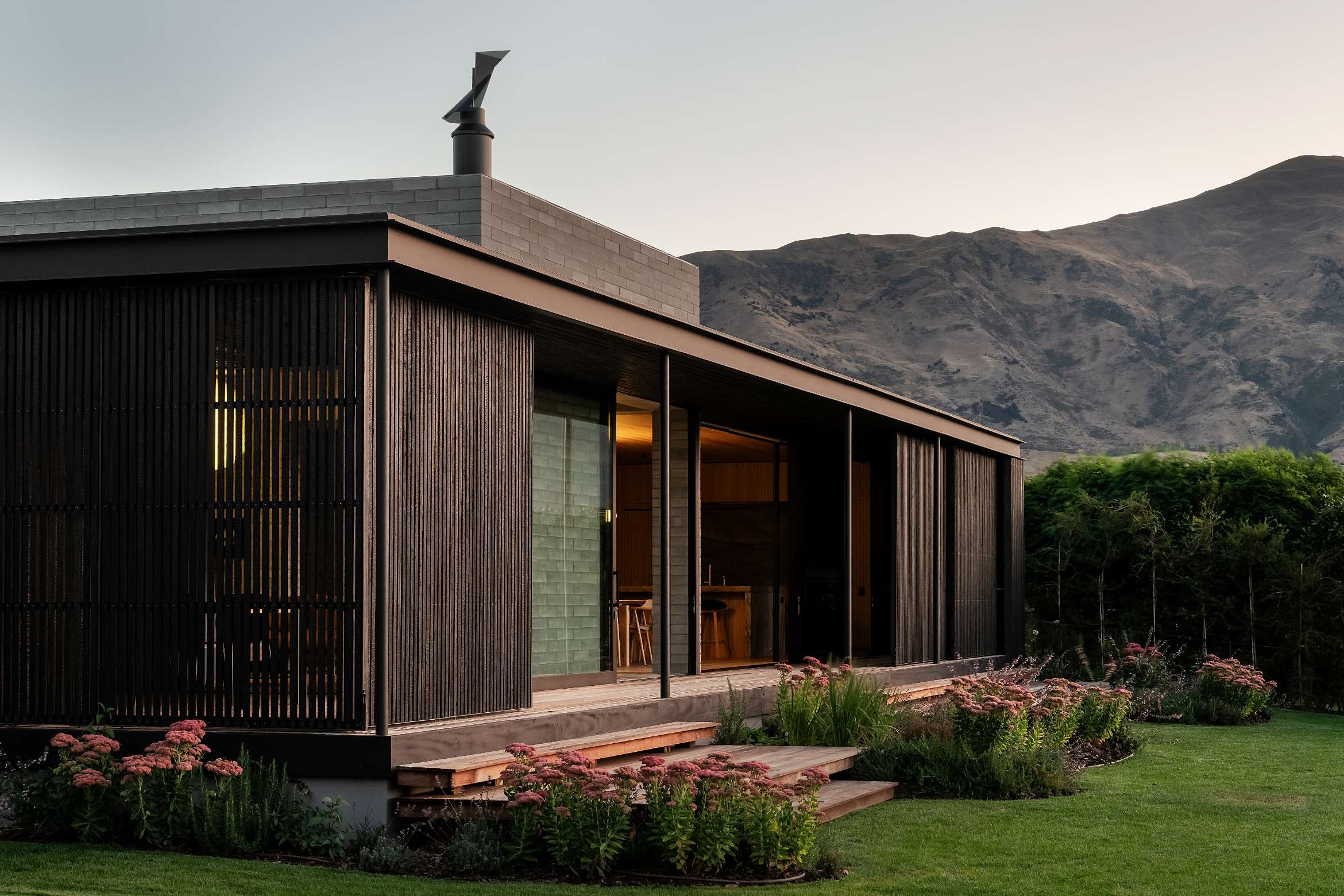Positioned conveniently within walking distance of Wānaka’s urban centre, this site has been occupied by the client for over two decades. As Wānaka has transformed from a quaint town into a busy urban area and established tourist destination, the client sought an intragenerational project that could be an adaptable retreat amidst the ongoing evolution and densification of Wānaka. In response to the changing landscape, the street facing façade is deliberately abstract, while selectively revealing hits of what lies beyond. On entering, the house reveals itself as both formal and free-flowing.
This appeal to different modes of inhabitation is seasonal. In winter, a low-lit, dark-clad mudroom transitions to a light-filled interior with framed views of the mountains beyond. In summer, a casual meander over stone steps links a sequence of gardens to a spacious central courtyard at the heart of the home.
A reduced palette of natural mateerilas creates continuity between inside and out. The module of these materils inform everything from the characterful detailing to the proportion and openings of each room.
This exacting relationship from part to whole is evidence of a strong collaborative relationship across the project team. The landscape response is much looser, offsetting the exacting geometries of the architecture with fractured edges to the stone paving and planting that varies in height and density throughout the seasons.
The project presents itself as a series of solid geometric forms, thoughtfully arranged to establish openness and enclosure. These forms are tied together by lightweight screen systems, courtyards and carefully placed openings – creating dynamic interplays of light and shadow within. The outcome is an urban sanctuary amidst Wānaka’s dynamic landscape, inviting the next generation to enjoy the home into the future.
